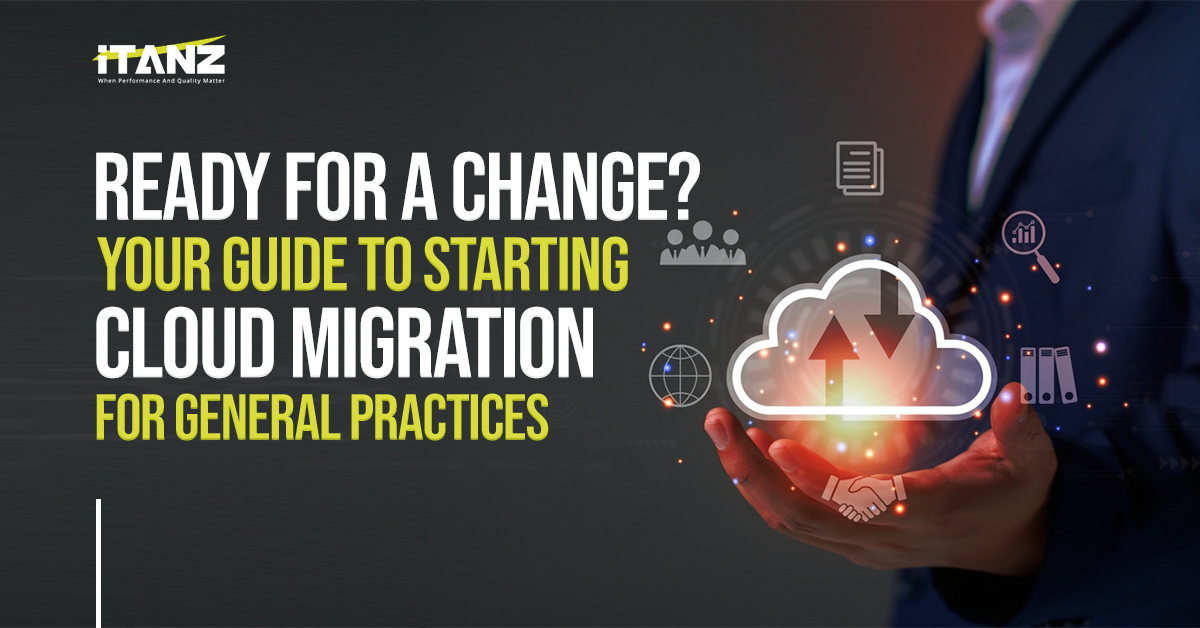Imagine a bustling general practice in Sydney during peak flu season. The waiting room is overflowing, phones are ringing off the hook, and then…disaster strikes. The on-premises server crashes, bringing the entire system down. Patient records are inaccessible, appointments are delayed, and frustration mounts for both staff and patients. This scenario, unfortunately, is a reality for many Australian general practices relying on outdated IT infrastructure.
Maintaining on-premises servers can be expensive and time-consuming, requiring constant upgrades and repairs. Additionally, data security remains a top concern, with practices needing robust solutions to protect sensitive patient information. However, there’s a powerful solution that can transform your general practice’s IT operations: cloud migration. Moving your data, applications, and IT infrastructure to a secure cloud platform offers numerous advantages, boosting efficiency, security, and cost-effectiveness for your practice. Cloud migration services can revolutionize your Australian general practice.
Understanding Cloud Migration
Many Australian general practices are wondering: what exactly is cloud migration, and how can it benefit my practice?
Cloud migration refers to the process of moving your data, applications, and entire IT infrastructure from your on-premises servers to a secure cloud platform. Imagine storing your data and applications on a remote network of servers accessed through the internet, instead of relying on physical hardware in your office.
This shift offers a multitude of advantages for general practices:
- Increased Efficiency & Scalability: Cloud-based systems allow you to access patient files remotely, improving collaboration and patient care. Additionally, storage capacity can be easily scaled up or down as your needs evolve, eliminating the need for expensive hardware upgrades.
- Enhanced Security & Compliance: Reputable cloud providers offer robust security features like data encryption and access controls, safeguarding sensitive patient information. Cloud platforms can also simplify compliance with data privacy regulations like GDPR.
- Improved Collaboration & Communication: Secure cloud-based systems facilitate seamless communication between doctors, nurses, and other staff members, regardless of location. This fosters better teamwork and patient care coordination.
- Cost Savings: Cloud migration can lead to significant cost reductions. You eliminate the need for expensive hardware maintenance and software licenses. Additionally, cloud providers offer a pay-as-you-go model, allowing you to only pay for the resources you use.
Many Australian general practices have successfully migrated to the cloud with the help of IT service providers. These practices have experienced significant improvements in efficiency, security, and cost-effectiveness. Doctors can now access patient records remotely, appointments can be managed online, and data security is enhanced through robust cloud-based features.
Cloud Migration Checklist for General Practices
Before diving into the cloud, a well-defined plan ensures a smooth transition. This checklist outlines key considerations for a successful cloud migration, incorporating best practices across the entire process.
- Assessment Phase:
- Evaluate IT Infrastructure: Begin by assessing your current IT setup. This includes taking stock of hardware, software, and data storage needs. Understanding your existing environment helps determine the resources required in the cloud.
- Identify Cloud Goals: Define specific objectives you hope to achieve through cloud migration. Are you aiming to improve data security for patient information? Enhance accessibility for remote consultations? Clearly outlined goals guide your migration strategy and help measure success later.
- Planning Phase:
- Choose a Cloud Provider: Australia boasts several reputable cloud providers specializing in healthcare solutions. Consider options like Microsoft Azure or Amazon Web Services (AWS), both offering robust security features and industry-specific compliance certifications.
- Develop a Migration Strategy: Outline the migration process, detailing data transfer methods and downtime considerations. This plan should include timelines, resource allocation, and rollback procedures in case of unforeseen issues.
- Security Considerations: Security is paramount in healthcare. Plan for robust data security measures in the cloud environment. This might involve data encryption at rest and in transit, access controls with multi-factor authentication, and regular security audits.
- Execution Phase:
- Data Migration: Securely migrate your data to the chosen cloud platform. This may involve staged data transfers or cutover events, depending on the volume and sensitivity of your information.
- Application Migration: Transition of your applications to the cloud environment. This could involve re-platforming for cloud-native compatibility or leveraging cloud-based equivalents for specific functionalities.
- Testing & Training: Thoroughly test all migrated systems to ensure seamless operation. Additionally, train your staff on new cloud-based workflows to maximize user adoption and optimize cloud resource utilization.
- Optimization Phase:
- Monitor Performance: Continuously monitor cloud infrastructure performance. This includes tracking metrics like server load, network latency, and application response times. Optimize resource usage based on insights from performance monitoring.
- 2. Scalability Management: Cloud offers on-demand scalability. Regularly review storage and bandwidth requirements, scaling up or down as needed to accommodate changing workloads and user demands.
- Cost Management: Cloud services offer a pay-as-you-go model. Implement cost-saving strategies like identifying and eliminating unused resources, leveraging reserved instances for predictable workloads, and utilizing automated scaling to optimize resource allocation.
- 4. Compliance Assurance: Maintain compliance with relevant healthcare data privacy regulations like the Australian Digital Health Agency (ADH) standards throughout your cloud journey. Regularly review security configurations and access controls to ensure adherence.
- 5. Continuous Improvement: The cloud is an ever-evolving landscape. Embrace a culture of continuous improvement by staying updated on new cloud features and functionalities. Explore opportunities to leverage cloud-native services to further enhance efficiency, security, and innovation within your healthcare practice.
By following this comprehensive checklist and embracing a continuous improvement mindset, you can ensure a successful cloud migration for your healthcare organization, unlocking the potential for improved patient care, enhanced operational efficiency, and greater scalability.
Additionally, migrating to cloud-based services future-proofs your infrastructure. Traditionally, on-premises solutions require constant upgrades and maintenance to keep pace with evolving technology. Cloud-native services, on the other hand, are designed for continuous improvement and automatic updates. This ensures your practice always has access to the latest features and security patches, without the burden of managing them yourself.
Explore opportunities to leverage cloud-native services to further enhance efficiency, security, and innovation within your healthcare practice.
By following this comprehensive checklist and embracing a continuous improvement mindset, you can ensure a successful cloud migration for your healthcare organization, unlocking the potential for improved patient care, enhanced operational efficiency, and greater scalability.
Are you ready to unlock the transformative potential of the cloud for your general practice? iTANZ Australia offers comprehensive cloud migration services specifically designed for the unique needs of healthcare providers. Our experienced team guides you through every step of the migration process, ensuring a smooth and secure transition.
Schedule a free consultation with our cloud specialists today to discuss your specific requirements and craft a customized migration plan for your practice.







